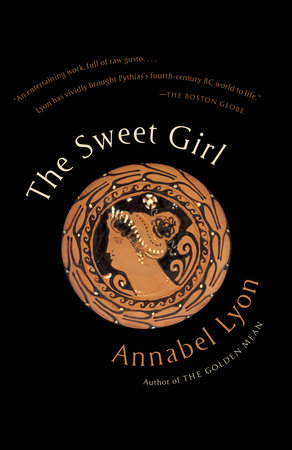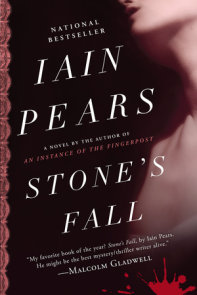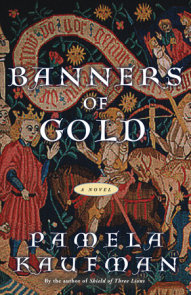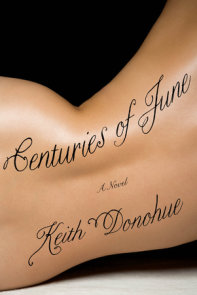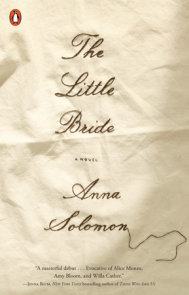READERS GUIDE
The questions in this guide are intended to enhance your discussion of The Sweet Girl by Annabel Lyon.Introduction
From the award-winning author of The Golden Mean, a captivating, wholly transporting new novel that follows Aristotle’s strong-willed daughter as she shapes her own destiny: an unexpected love story, a tender portrait of a girl and her father, and an astonishing journey through the underbelly of a supposedly enlightened society.
Aristotle has never been able to resist a keen mind, and Pythias is certainly her father’s daughter: besting his brightest students, refusing to content herself with a life circumscribed by the kitchen, the loom, and, eventually, a husband. Into her teenage years, she is protected by the reputation of her adored father, but with the death of Alexander the Great, her fortunes suddenly change. Aristotle’s family is forced to flee Athens for a small town, where the great philosopher soon dies, and orphaned Pythias quickly discovers that the world is not a place of logic after all, but one of superstition. As threats close in on her—a rebellious household, capricious gods and goddesses—she will need every ounce of wit she possesses, and the courage to seek refuge where she least expects it.
Questions and Topics for Discussion
1. What do the early scenes between Aristotle and Pythias convey about their relationship? Why does Aristotle encourage Pythias’s involvement with his work? In what ways does Herpyllis provide a contrast to Aristotle and his expectations for Pythias? What does each of them represent about the intellectual, social, and cultural environment of the time?
2. What insights do the discussions with his students offer into Aristotle’s philosophy (pp. 16–18? What do they reveal about differences between Aristotle’s thinking and the views of others? How do Pythias’s presence and comments influence the content and tone of the conversation?
3. How does Pythias’s transition into womanhood affect her relationship with Aristotle and Herpyllis? What is the significance of the ritual at the temple (pp. 21–3)? Of Aristotle’s reaction to her first period (p. 26)?
4. In what ways does Myrmex’s arrival upset the atmosphere of Aristotle’s household? What feelings does it provoke in Pythias? How do their positions within the household help cement their relationship? What qualities does Myrmex share with other romantic heroes in literature—or in real life?
5. How does Lyon meld the political and the personal in showing the impact of Alexander’s death on Aristotle and his family? What do the philosopher’s reactions reveal about the private man behind the famous public figure (pp. 43-45, p. 49, pp. 60-62)? What aspects of life in exile are particularly difficult for him and why? What ethical concerns are evident in the provisions of his will (pp. 92-93)?
6. After Aristotle dies, Pythias begins to learn how difficult life is for a woman alone. What internal resources does she call on in the immediate aftermath of his death? Why does she choose not to return to Athens with Nico or accompany Herpyllis to her hometown?
7. What does Herpyllis’s response to Aristotle’s death reveal about their relationship and the qualities that made her his cherished companion? Why does Myrmex react to Aristotle’s provisions for him with anger? Are his retaliatory actions understandable?
8. What sets Euphranor apart from the other men Pythias deals with? What facets of his character come to light during their visit to Aristotle’s farm (pp. 130–35)?
9. As the life she knows unravels, Pythias discovers deep divisions in Greek society—between men and women, the powerful and the powerless. How do her interactions with Glycera (pp. 126-130) and the priestesses at the temple of Artemis (pp. 138–40, 155–56) contribute to her nascent sense of what it means to be a woman in her society? Why does she reject the lives they represent?
10. Why does Pythias choose to work with the midwife (and abortionist) Clea? How does it help her integrate the teachings of her childhood and the knowledge and awareness she has developed as a young woman?
11. What do the appearances of Artemis (pp. 159–60) and Tycho’s apparent possession (pp. 170–72) demonstrate about the line between the real and the fantastical in ancient culture? If you are familiar with Greek myths or classic plays that portray interactions between humans and gods, discuss how the encounters in The Sweet Girl fit into the tradition.
12. In what ways do the divine intercession and other mysterious events in the novel symbolize the psychological and emotional turmoil of adolescence?
13. “There is the rational mind and the animal body…. I understand, finally, that Daddy suffered so because he was practically all mind and no animal…. I am lesser. Is it because I’m girl? Daddy would say so. But that theory doesn’t account for the animal natures of Nico, of Myrmex” (p. 122) In what respects does this dichotomy embody the themes of the novel?
14. In describing her heroine, Lyon said, “For me, she’s on the cusp of modernity. She’s the first modern woman.” (CBC Books, October 29, 2012). Do you agree? What issues in the novel support your point of view?
15. Little is known about the real Pythias. What are the negative and positive sides to reimagining historical characters in works of fiction?
About this Author
Annabel Lyon’s first novel, The Golden Mean, was a number one best seller in Canada that won the Rogers Writers’ Trust Fiction Prize, was short-listed for the Scotiabank Giller Prize and the Governor General’s Award for Fiction, and has been translated into fourteen languages. She is also the author of a story collection, Oxygen; a book of novellas, The Best Thing for You; and two juvenile novels, All-Season Edie and Encore Edie. Lyon lives in British Columbia with her husband and two children.







